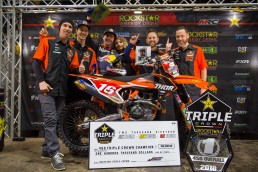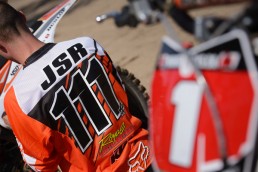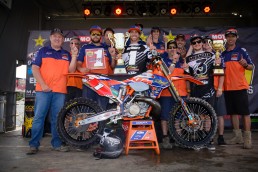Even if he no longer accumulates the podiums, Jean-Sébastien Roy is enjoying his retirement from the world of competition. He gives back to his sport and remains involved in the racing world with the KTM Group.
“I don’t miss the competition anymore, ” admits the former champion. “I turned the page well, I was ready to turn it. I prepared very well and it went well. I have no regrets. I had run long enough and accomplished virtually all of my challenges and goals.”
“NEW GENERATION OF MOTORBIKES”
Motocross has improved greatly with the technology push and decreased weight. An evolution that germinated under the eyes of the five-time Canadian champion.
“There has been a lot of improvement, now it’s fine tuning,” explains the native of Acton Vale. “You can adjust your motorcycle more easily than before with new technology. Motorbikes are a bit more versatile with every terrain, compared to many years where it was less easy to make modifications on the spot, for the rider, who wanted to improve his mount according to the needs and conditions of the circuit.”
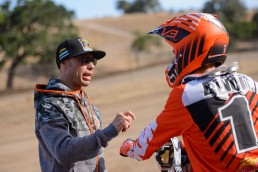
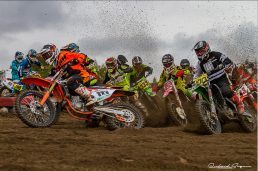
MOTORCYCLE DEVELOPMENT
Jean-Sébastien Roy experienced the transition from the two-stroke engine to the four-stroke engine at the end of his career. The early mounts weren’t what they are today, which made riding a bit more difficult. Especially for him, he has ridden his entire career, since the age of four, on lighter two-stroke motorcycles.
“The big difference over the past ten years is that manufacturers have managed to lower engine heights as low as possible from the center of gravity,” he notes. The lighter weight and lower weight in motorbikes make the new generation of four-strokes easier to ride. Any part that turns in an engine at 11,000 rpm greatly affects the agility of the motorcycle. Any weight reduction in motion makes all the difference.
“Apart from these few changes, when looking at motorbikes today versus fifteen years ago, are no big differences. We are talking about the same size of wheels, the same travel of the suspensions, the same liquid cooling, substantially the same dimensions and heights of the saddle; everything is practically the same.
“We have come to the end of development in terms of size,” admits the retired athlete. The rest is really micro-details that change. The next big change that will happen in the next decade will of course be the electric component at the level of large competition motorcycles. This will change once again, as the four-stroke did, the riding style and handling of the bikes will be completely different given the massive absence of engine parts. It will be a whole new learning for future followers.”
CUSTOMIZATION AND MAINTENANCE
Although the new bikes are already very well adjusted, it is possible for riders to modify and customize a few components to improve performance.
“It’s a racing world, you won’t take away the core of the racer who wants to change,” emphasizes Jean-Sébastien Roy. We will never change that. There is a little room for improvement in all of our motorcycles. You can have some power parts to give a little more power or to shift the power curve as you need. The sinews of war in our sport are the suspensions.
“The maintenance of motocross bikes should be made to avoid any problems. The mount must be cleaned well, the lever gear in the rear suspension must be greased, the tires changed if necessary, check that the fuel filter is not blocked, make sure that there is no water in the electrical connectors, and the list goes on and on. These are complex machines that need servicing and regular maintenance.”
“When you go in the mud, if you don’t wash well, everything rusts, gets dirty and wears even faster,” recalls Jean-Sébastien Roy, who invites people to follow the instruction manual. It’s maintenance to grease everything when you have your motorbike at the start of the year. You have to have mechanical talents and a passion for it because you still have time to put into it and it’s part of the lifestyle and the sport. If you don’t like it, go play golf and leave your clubs with the kid at the pro shop. »
FAST ASCENT
Located in Chambly, the KTM Group (Husqvarna, Gas Gas) is the only motorbike manufacturer with the Canadian head office based in Quebec and it is one of the few to have retained a category of two-stroke motorbikes. The manufacturer stands out in the industry for several reasons.
“KTM is a relatively young company,” says Jean-Sébastien Roy. But when I arrived with them in 2011, KTM was on the rise and since then, it’s been going full blast. From the start, I was approached to bring my expertise as a racer as well as my passion to the growing group. I started coaching the KTM riders a bit and helping the racing team. Years went by and I fell full time. “
